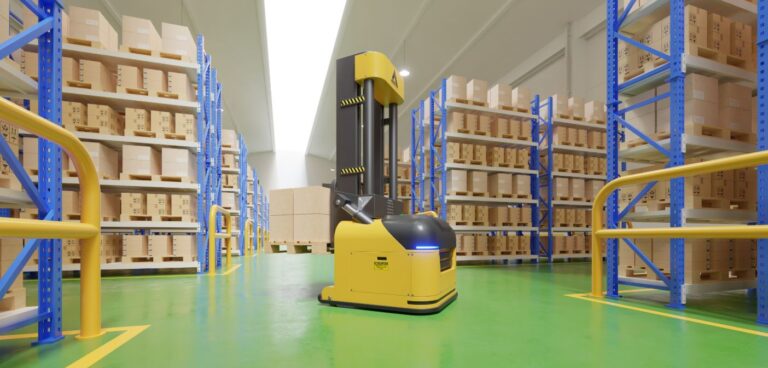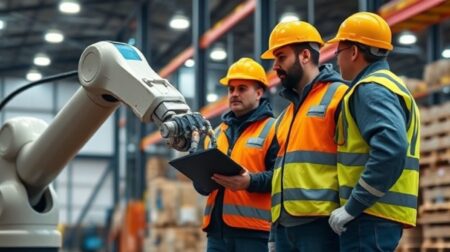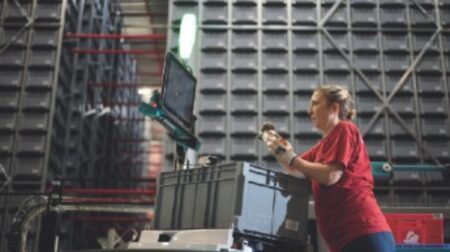Should you invest in an AMR or an AGV? Robotics & Innovation has assembled a panel of industry experts to help inform and guide you through the decision-making process…
As automation becomes the new normal for industrial operations in the age of Industry 4.0, the options to help businesses get there are rapidly evolving.
Technologies such as unmanned forklifts, collaborative robot arms, enhanced sorting/picking, and smart conveyors are advancing while costs continue to decrease; making these options more accessible for companies of all sizes.
One such advancement attracting much attention recently has been autonomous mobile robots (AMRs), which are perceived by many as smarter, more flexible alternatives to automated guided vehicles (AGVs), especially for a wide variety of material handling and logistics activities.
But is this really the case? Here, Nicholas Temple, vice president of sales at Bila Logistics – West US; Dr Paul River, CEO of Guidance Automation; Antonio Espingardeiro, IEEE member and a software and robotics expert; Michel Spruijt, vice president and general manager of Brain Corp Europe; and Rajiv Ranjan, CEO of Complygate, give their thoughts on both solutions.
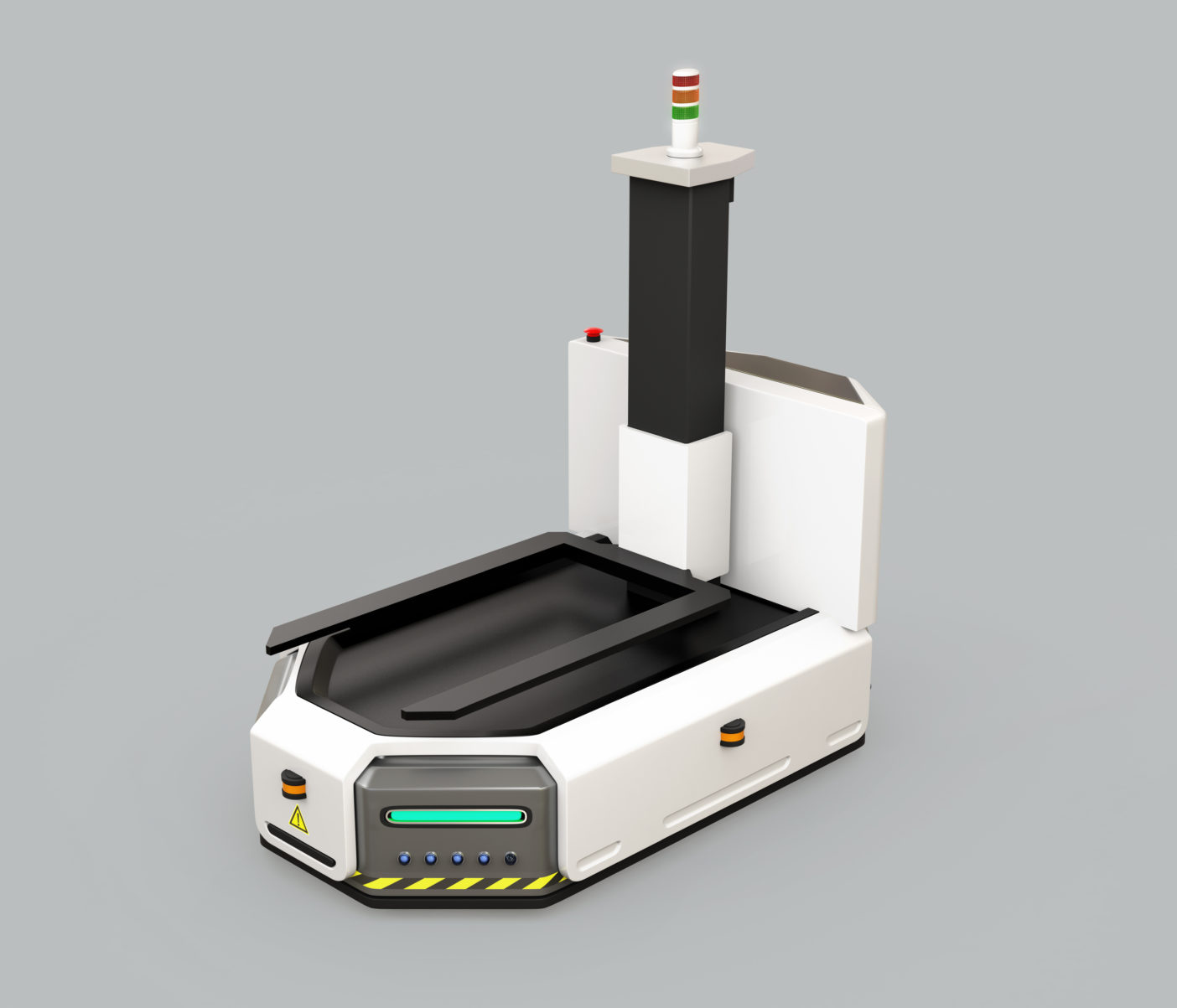
What are the key differences between AMRs and AGVs?
Paul Rivers: AGV was the original name given to industrial vehicles that moved themselves around a facility; ‘automated’ because they moved themselves around without direct instruction between destinations and stops, ‘guided’ because they followed lines (usually magnetic tape) and ‘vehicles’ because they were large, either flatbed type or based on a fork lift truck style.
As online shopping has developed, there has been both need and demand for much smaller vehicles, travelling larger distances through various aisles, moving smaller payloads, more often. Because the companies that made such small vehicles tended to make a vehicle base only, and then a customer would add a top function (e.g. conveyor, lifter, grabber, mechanical arm, vision/ inspection system,) the vehicles were seen more as robotic vehicles.
‘Automated’ became ‘autonomous’ as the vehicles are less guided by a defined line on the ground or a laser triangulation system, but they ‘wander’ in a general direction, navigating obstacles to reach a destination, more like a human would if they were walking from two locations and had to negotiate obstacles or other people.
Antonio Espingardeiro: They are essentially built to achieve different objectives. In autonomous robots you have the ability to navigate an unstructured environment without human beings necessarily controlling them. This could be in a small indoor location such as a household, or a congested traffic road for an autonomous vehicle for example. This category of robot (AMRs) relates to sensing capabilities that include laser ranger finder specs directly built in the hardware of the robot.
That allows the robot to recreate a 3D map around itself through a technique called simultaneous localisation and mapping (SLAM). At the same time, artificial intelligence is able to process those inputs and navigate safely to achieve a certain location / goal. On a completely different spectrum, AGVs are machines targeted for direct human control and supervision.
This means there is a human, or group, controlling the robot in real time by using joysticks or other type of user interfaces with the help of stereoscopic cameras on board the vehicle. These are often relied upon for tasks that are considered too dangerous for human beings to perform, such as radioactive inspection, where robots are controlled from a safe distance and help to inspect or deactivate certain items.
Michel Spruijt: AGVs are pre-programmed mobile robots that operate in simple, unchanging
environments. In order to perform properly, large infrastructure changes and environmental retrofits are
typically required. Beacons or magnetic track tape are carefully implemented, oftentimes at significant cost.
These robots can only operate around trained-users and must do the same tasks each and every day. They have the ability to stop if they encounter an obstacle, but cannot make decisions, change their actions, or reroute around problems without an external system telling them what to do.
AMRs, on the other hand, are fully autonomous and able to make all of their decisions ‘on board’. They do not need input from an external decision-making source and are able to safely perform tasks in dynamic, public spaces. Environments deploying AMRs don’t need to invest in expensive infrastructure changes as the robot is fully operational upon arrival. What’s more, AMRs can quickly adapt to changes in their surroundings, making them much more flexible and easier to use than AGVs.
Rajiv Ranjan: The key difference lies in the functions of both solutions within the production environment. AGVs are solely focused on the movement of goods within the factory/warehouse, especially bin to bin, while AMRs have more business functions and operations programmed into them, such as picking lists or scanning the inventories and its location and movement of goods.
Nicholas Temple: AGVs have been around for 40+ years and traditionally follow magnetic tape, a sensor network or another type of fixed infrastructure for navigation. They are programmed solutions rather than a configured solution. These two factors mean that AGVs are not very flexible.
Traditional AGVs are also project based rather than product based. AMRs navigate with natural features in the existing infrastructure. It is a configured solution, meaning it is easier for the user to re-programme or remap an area. Lastly, AMRs typically have dynamic obstacle avoidance, meaning they can select their own path rather than following a fixed path.
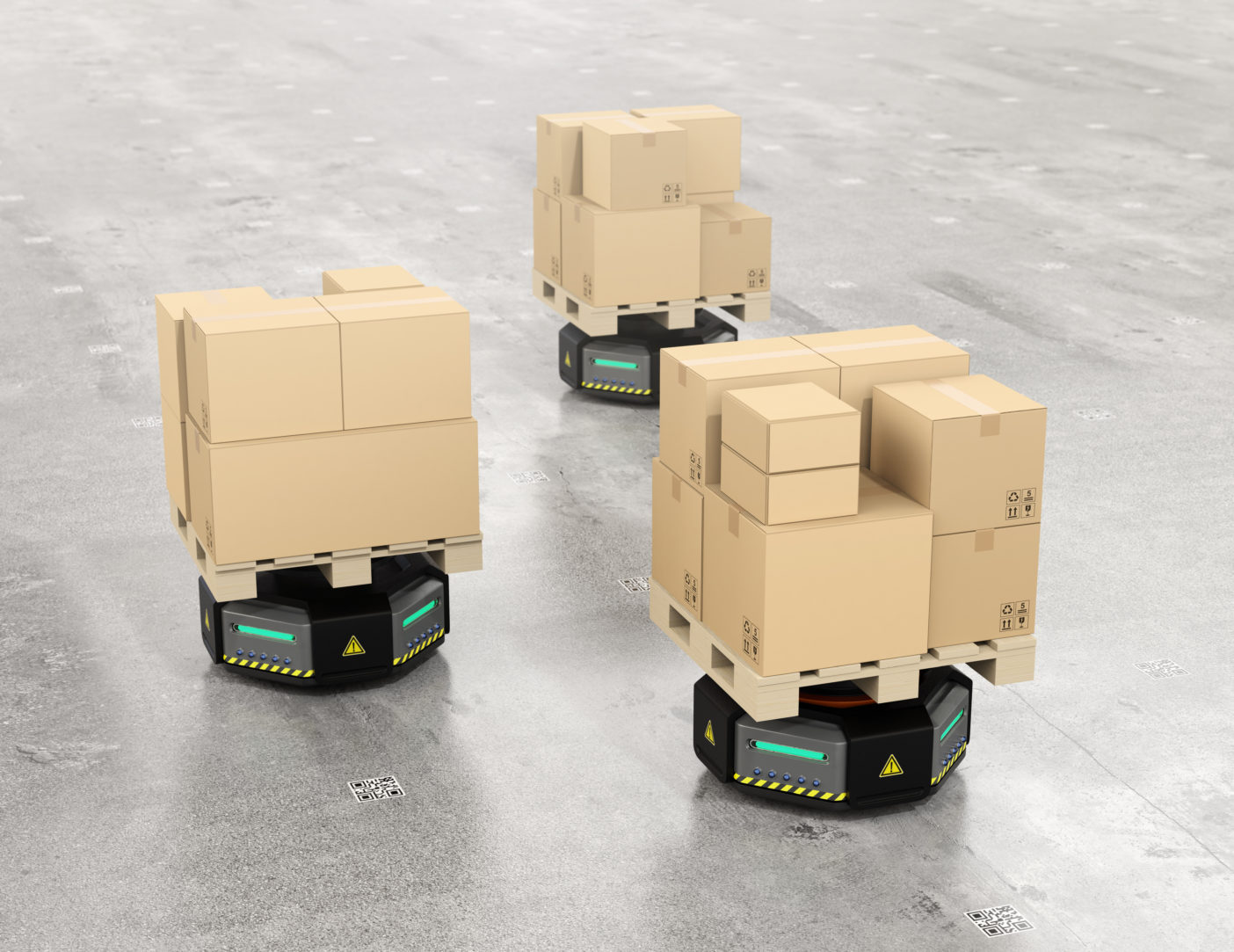
What industries/operations are best suited to each solution?
PR: One of the key tasks when a fleet of vehicles is first installed in any location is the psychology of their interactions with humans. At first, they seem strange, moving around a building, and humans need to understand how they will react when the two are on a collision course. It doesn’t matter how many times a driverless forklift truck comes down an aisle, there is still an element of fear, wondering if this machine will stop before it collides with you.
The one thing that you do know is that its moving around on a virtual railway line, as it has very strict routes to follow, and so it is very easy to see that large AGVs stick to the route and they will stop if they meet an obstacle and wait to progress again.
AMRs, on the other hand, tend to be walkers. They move around at a similar speed to humans and are of course much smaller, usually only about half the height of an adult. So, depending on the installation, the human workforce sharing the facility will be trained how to work with AMRs. For a human, it might be that you move to the side and let the vehicle through. With some types of AMR, you stop and it drives round you – the rules can be set to suit the facility and speed of motion.
MS: Highly controlled, non-public sites, such as warehouse and manufacturing environments have benefitted from AGV technology in the past. Complex, dynamic spaces are best suited to AMRs. Retail outlets, healthcare facilities, airports, and schools are a few of the many places where AMRs can, and have been, successfully deployed.
RR: AGVs are predominantly for factory/warehouse environments that require movement of materials from bin to bin, be it raw material, finished or semi-finished goods. For many production environments where forklifts are commonplace, AGVs are the best bet. In the case of hi-tech factories involving picklists, AMRs are quite useful in filling the need of material movement.
What do companies need to know or consider before making an investment in either solution?
PR: The business case for either is the same; you need to decide how much time a human is moving a cart or driving a forklift between locations. These minutes are a cost to the business. Additionally, you need to think about how the vehicle can replicate the job. The cost of adding vehicles also depends on the other infrastructure and process changes that you need to make in the facility.
Some applications will be done more efficiently than humans, some might be too slow to automate if things have to happen in a narrow time window. But generally the cost savings by these vehicles are the time that a human spends walking. Humans also change speed depending on mood, health, time of day and how many colleagues they interact with along the way.
AE: Companies must consider the different areas of application – that is, what they actually want to achieve and the different types of scenarios it will be applying this technology to. For instance, maintenance and inspection scenarios are far more suitable for AGVs. Robots can be controlled at a safe distance to monitor things and if equipped with hardware such as robotic arms, they could act upon surrounding objects, e.g. closing valves or disassembling harmful devices.
On the other hand, perhaps the most prominent application for AMRs at the moment is autonomous vehicles. The same navigation principles are also being applied in robots with autonomous capabilities to move hospital waste or disinfect corridors in crisis situations.
MS: Businesses that operate predictable, unchanging operations in enclosed spaces have benefitted from the use of AGV technology. Once a site has been retrofitted and processes built around automation, AGVs can provide companies with a high level of day-to-day consistency.
However, a company must be confident that their operations will remain consistent well into the future in order to justify the costs tied to AGV infrastructure requirements. Should the business need to change its physical environments, whether it be in regard to equipment layout, worker placement, or hours of operation, this could result in an expensive and time-consuming update.
AMRs do not require these up-front costs. These fully autonomous solutions can easily be adapted to changing environments and work safely and seamlessly around people. While they do require some oversight on the part of employees, AMRs can perform their tasks in public spaces and provide a level of flexibility you simply won’t get with AGVs.
RR: AGVs are commonplace in most future factory solutions and have a clear business case of replacing the drivers within the premise with a high degree of integration with existing ERP or warehouse management system.
The ROI for AGVs is well documented with a lean implementation cycle and less risk involved given the maturity of the solution without the need to rework/ redesign the business process of an organisation. However, with AMRs, the business objective and its usage is still quite dependent on companies with expert knowledge of the business process to be modified. Moreover, Industry giants like Toyota are heavily invested in AGVs, which makes it easy for companies to adopt the solution as a proven one.
NT: In large production areas, an AMR’s recalculation time for dynamic obstacle avoidance to pick out a new path can be considerable. I have had customers tell me that AMRs have gone offline and CPUs fail due to the map being too large.
What is the cost difference between AMRs and AGVs?
PR: There might not be a cost difference. The price of the vehicle is very dependent on the technology, which is usually dependent on the function of the vehicle. In principle, the components in the basic vehicle are the same – motors, batteries, vehicle control electronics, safety scanner and some software to manage the movement. In this case, the smaller vehicle would be cheaper due to the smaller batteries and motors.
If I want to add functionality, the number of actuators and sensors starts to increase, and hence so does the technology and price. Prices are reducing as technology improves, competition and demand increase and there becomes a general acceptance.
AE: AMRs use proximity sensors, laser ranger finders, cameras and computationally expensive software (onboard hardware), which are much more costly than AGVs. The main difference is that AGVs are controlled remotely so this involves considerably less hardware to be able to pilot those machines.
MS: Costs vary significantly from machine to machine. That said, AGVs typically require high, up-front infrastructure costs that are not necessary if utilising AMRs.
RR: Comparing AGVs and AMRs on cost function is not worthwhile as they represent two different functions. The business problem of AGVs is clear and the cost comparison is performed using existing forklift vehicles. AMRs are packed with more technology and are used for a specific purpose, while the added intelligence of AMRs can be a hindrance to adoption in production factories.
NT: Many AMRs have low payloads, and the larger the payload the more expensive the solution.
However, AMRs have hidden costs, too. For example, modifications to carts or addition of stands for pallets to allow the AMR to tunnel underneath. Or accumulating conveyors to allow pallets to be put away. A MiR1000 is around US$80,000 but if you add in US$2,500 per stand and US$25,000 for any accumulating conveyor, the solution starts to be comparable in price, but you now have fixed infrastructure with the AMR.
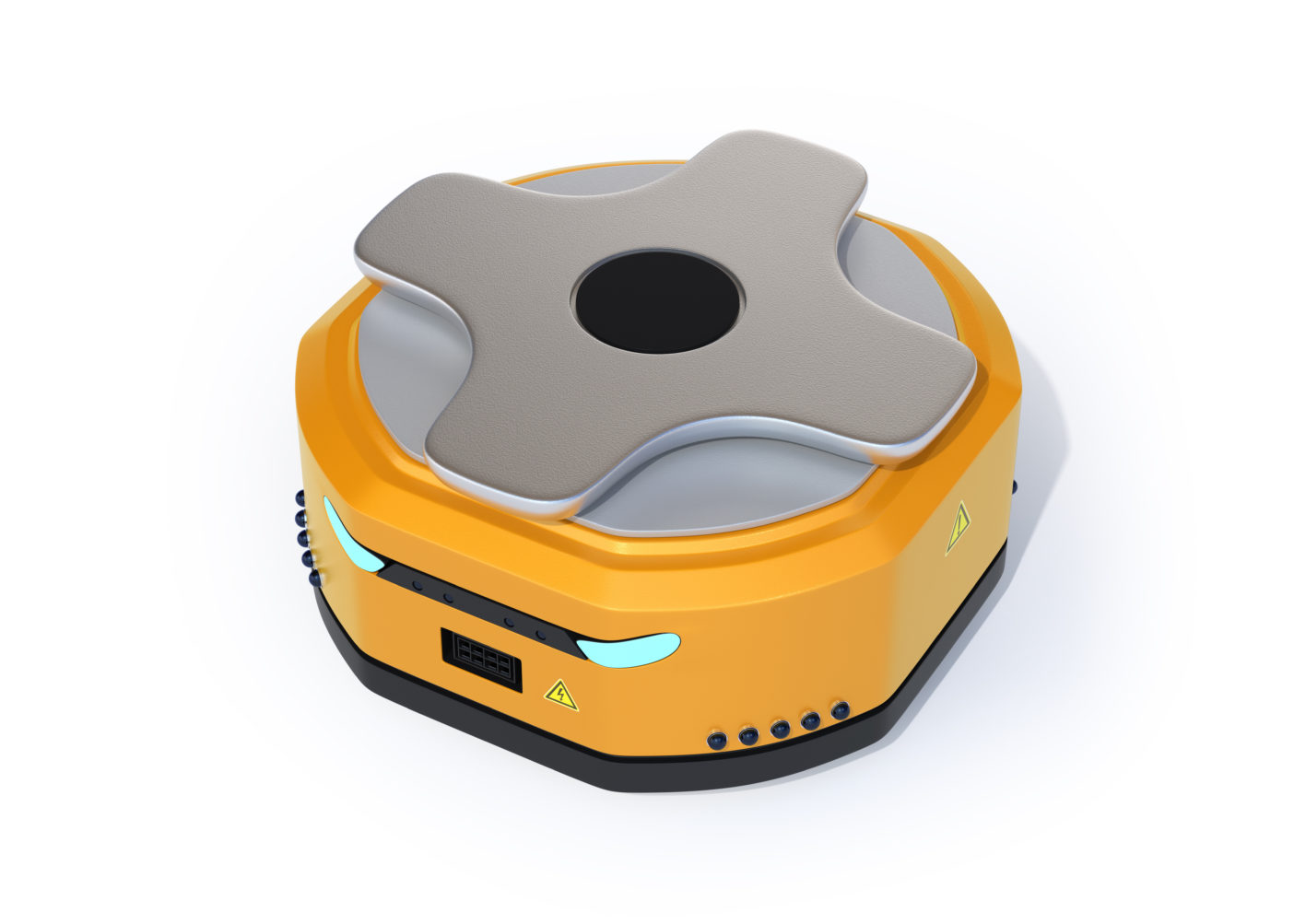
What are the biggest pros and cons of each solution?
PR: The vehicles are used in different applications. AGVs are still seen as industrial clunky vehicles, AMRs are more aesthetically pleasing and friendly. Both can be sent into harsh environments such as freezers and chilled areas where perhaps humans are less happy. You don’t need to light and heat a facility of AMRs or AGVs, but you do humans. The cons are more related to integration and changes to your process to make it work with either solution. And, of course, if the system crashes, you could be left with a large fleet of AMRs or AGVs not moving and hence no working or orders being picked
AE: Firstly, consider the technical complexity of both robotic categories. AMRs are very expensive as they represent the fringe of technology both in terms of hardware and software. Secondly, AGVs tend to be cheaper and more robust, which gives them a high level of applicability in most scenarios – even the extreme.
RR: AGVs have pros in terms of easy implementation and clear business function segregation in factories and warehouses. However, it’s not uncommon to see AGVs stuck and in need of manual assistance to overcome scenarios. AMRs provide more business functions and versatility for the movement of materials, but the implementation and maintenance of AMRs can be challenging as the complexity of functions is extended. Support for AGVs from leading automotive manufacturers provides credence and maturity to the solution.
Will one solution inevitably prevail over the other or will there always be a need for both?
PR: The technology that goes into driverless cars will eventually move onto AMRs and AGVs, turning them into AAMVs (autonomous automated mobile vehicles). But there will always be a need for different vehicle sizes and the amount of technology will depend on the application. Then there is the question, when will legged robots be roaming around the warehouse, over non-flat floors and climbing the stairs? Are legs more or less efficient than wheels?
MS: The recent global pandemic has clearly exhibited the need for businesses to be responsive, nimble, and flexible in their operations. Survival means being adaptable. Whether that means warehouses repurposing more space for e-commerce activities or manufacturing facilities implementing employee social distancing measures, all companies should be prepared for change.
The adaptability provided by AMRs makes them well suited for the businesses of the future. Pre-Covid, ABI Research predicted that the global commercial robot market share for AMRs would go from 22% in 2019 to 62% by 2030. My guess is that we’ll see this level of adoption even earlier than projected.
RR: Both will continue to chalk its own path and merge into one solution over a period of time. AGVs will gain more intelligence, while the clear difference that currently exists between AGVs and AMRs in regard to business function will decrease.
NT: No, I think there will always be a need for both. AI can be combined with computer vision for a richer 3D view of the environment instead of a 2D view for navigation and obstacle identification. Deep learning algorithms in the fleet manager can be used to improve positioning of mobile robots and the paths they take. Wi-Fi may be replaced with better connectivity solutions such as 5G. Battery life will increase to allow AGVs to travel further between charges and faster with bigger payloads.
Safety solutions and standards are continually evolving at a slower pace, but this will also change with legislation and will probably be more driven by trends in autonomous cars and trucks as they come online. Navigation solutions may improve and come down in cost for dynamic mapping solutions or navigating without the need for a map. At the moment, some AMR suppliers are heavily invested in e-commerce solutions that require a sophisticated fleet manager to allocate pickers and robots simultaneously. These solutions are low payload. 3PLs and retailers are looking for better ways to manage pallet movement or case picking versus individual item picking in their warehouses.
This article originally appeared in the July 2020 issue of Robotics & Innovation Magazine

